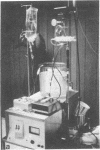Abstract
Studies were conducted on the microbiological quality of fluids associated with different types of dialysis systems located in six dialysis centers and 14 homes. Included were (i) single-pass systems employing either parallel flow (Kiil or Gambro) or capillary cartridge dialyzers and (ii) recirculating single-pass and batch recirculating systems using coil dialyzers. Microbiological assays were performed on the water used to prepare dialysis fluid, the concentrated dialysate, and either pre- and postdialyzer dialysate (single-pass systems) or the dialysate contained in storage reservoirs and recirculating cannisters (recirculating systems). The levels of microbial contamination consisting of gram-negative bacteria were directly related to the type of dialysis system, method of water treatment, distribution system, and in some instances, the type of dialyzer. Recirculating single-pass and batch recirculating systems consistently contained significantly higher levels of contamination than single-pass systems. These results were directly related to the design of recirculating systems which permits carbon- and nitrogen-containing waste products dialyzed from the patient to accumulate, be used as nutrients by microorganisms, and subsequently allow for 2- to 4-log increases in contamination levels during a dialysis treatment. In contrast, levels of contamination in single-pass machines were related more to the quality of the water used to prepare dialysis fluid and the adequacy of cleaning and disinfection procedures than to the design of the system.
Full text
PDF
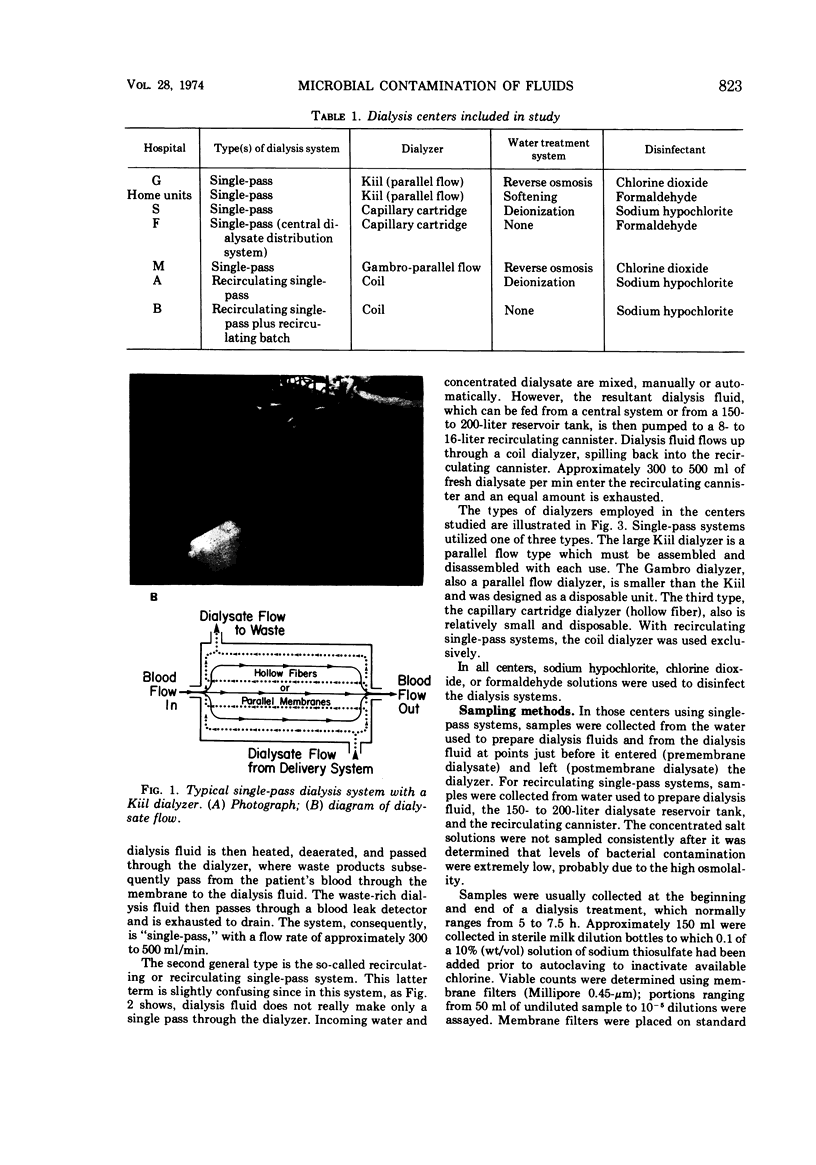

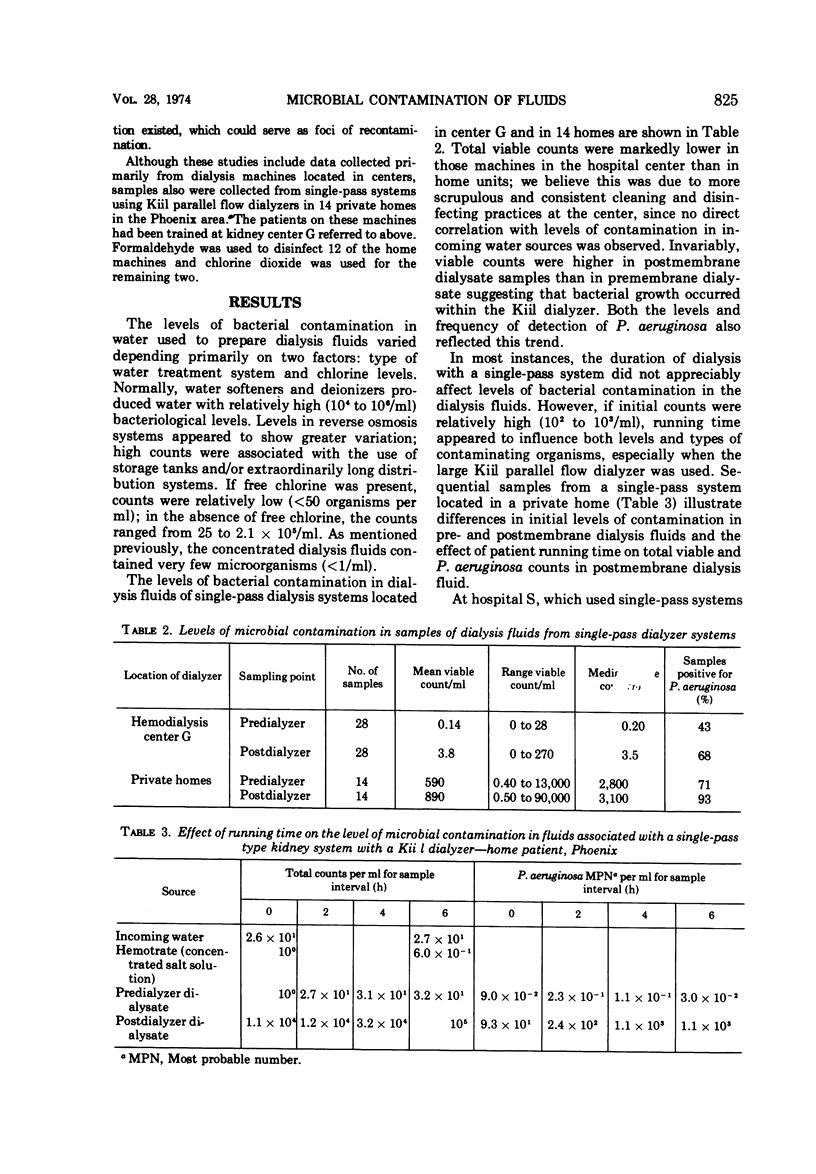
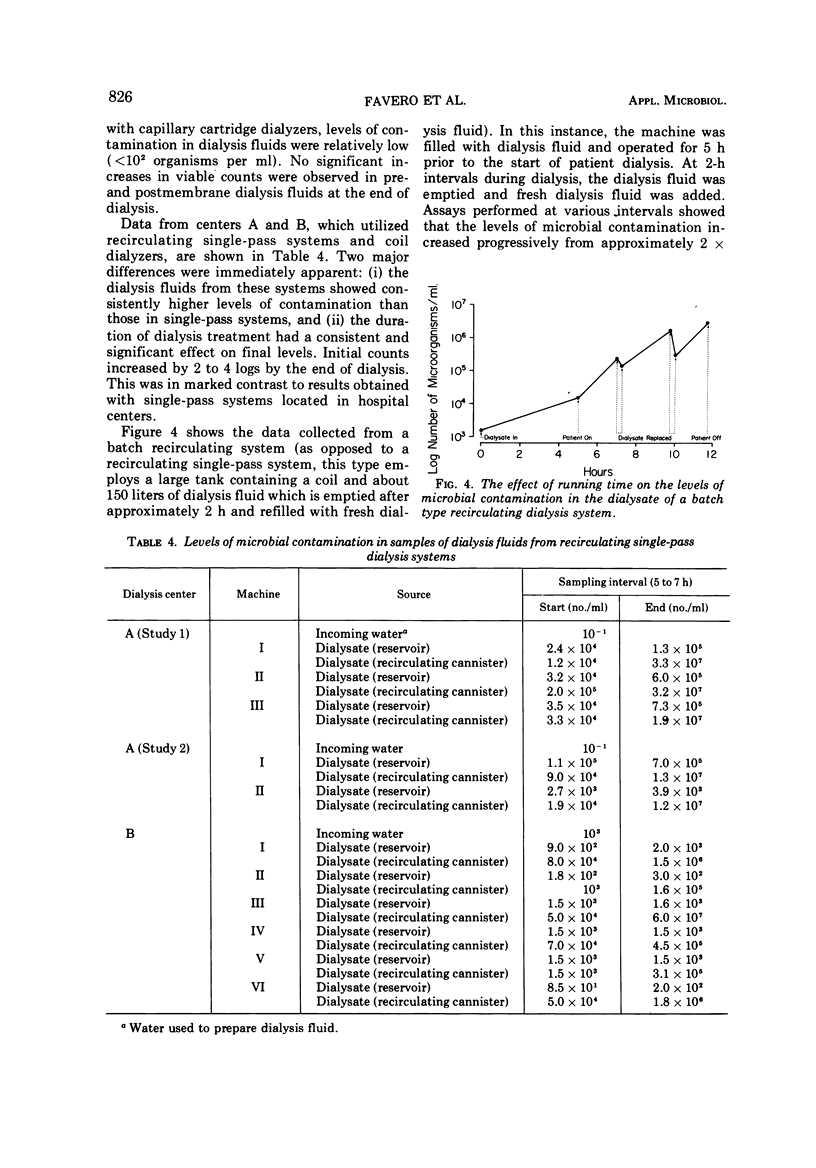
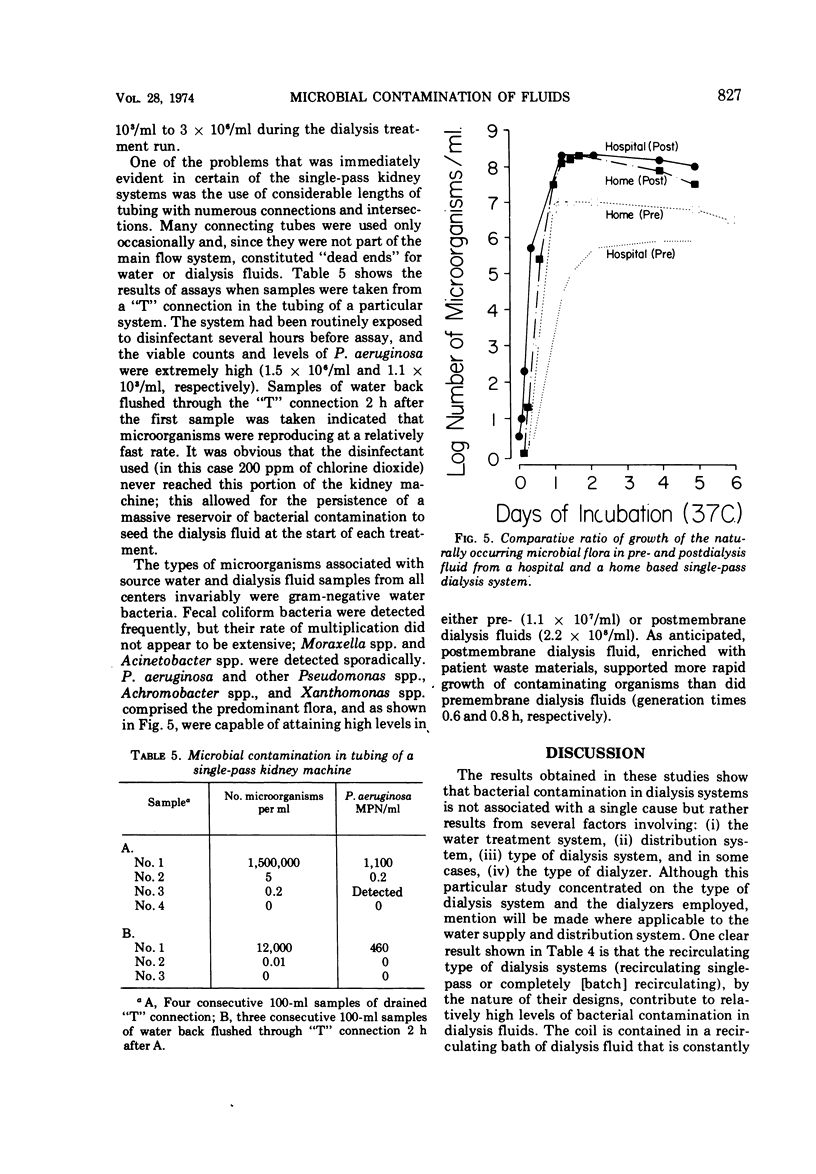
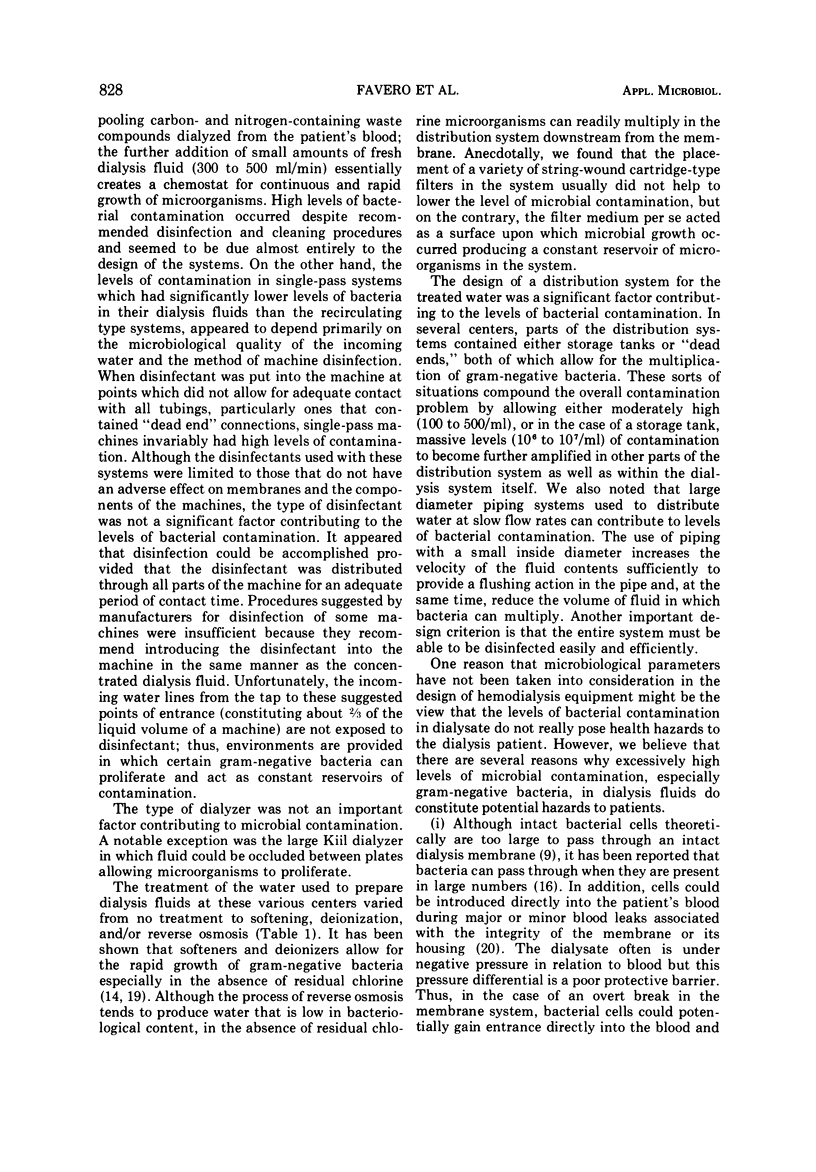


Images in this article
Selected References
These references are in PubMed. This may not be the complete list of references from this article.
- Carson L. A., Favero M. S., Bond W. W., Petersen N. J. Factors affecting comparative resistance of naturally occurring and subcultured Pseudomonas aeruginosa to disinfectants. Appl Microbiol. 1972 May;23(5):863–869. doi: 10.1128/am.23.5.863-869.1972. [DOI] [PMC free article] [PubMed] [Google Scholar]
- Carson L. A., Favero M. S., Bond W. W., Petersen N. J. Morphological, biochemical, and growth characteristics of pseudomonas cepacia from distilled water. Appl Microbiol. 1973 Mar;25(3):476–483. doi: 10.1128/am.25.3.476-483.1973. [DOI] [PMC free article] [PubMed] [Google Scholar]
- Dirks H. M. The Federal involvement in the care of patients with end-stage renal disease: the relationship to the nation's health properties. Transplant Proc. 1973 Jun;5(2):1047–1050. [PubMed] [Google Scholar]
- Drake C. H. Evaluation of culture media for the isolation and enumeration of Pseudomonas aeruginosa. Health Lab Sci. 1966 Jan;3(1):10–19. [PubMed] [Google Scholar]
- Favero M. S., Carson L. A., Bond W. W., Petersen N. J. Pseudomonas aeruginosa: growth in distilled water from hospitals. Science. 1971 Aug 27;173(3999):836–838. doi: 10.1126/science.173.3999.836. [DOI] [PubMed] [Google Scholar]
- Favero M. S., Petersen N. J., Boyer K. M., Carson L. A., Bond W. W. Microbial contamination of renal dialysis systems and associated health risks. Trans Am Soc Artif Intern Organs. 1974;20A:175–183. [PubMed] [Google Scholar]
- Fregerslev S. Microbial content in a non-sterile concentrated haemodialysis solution. Dan Tidsskr Farm. 1970;44(8):332–337. [PubMed] [Google Scholar]
- Gazenfield-Gazit E., Eliahou H. E. Endotoxin antibodies in patients on maintenance hemodialysis. Isr J Med Sci. 1969 Sep-Oct;5(5):1032–1036. [PubMed] [Google Scholar]
- Jones D. M., Tobin B. M., Harlow G. R., Ralston A. J. Bacteriological studies of the modified Kiil dialyser. Br Med J. 1970 Jul 18;3(5715):135–137. doi: 10.1136/bmj.3.5715.135. [DOI] [PMC free article] [PubMed] [Google Scholar]
- KIDD E. E. BACTERIAL CONTAMINATION OF DIALYSING FLUID OF ARTIFICIAL KIDNEY. Br Med J. 1964 Apr 4;1(5387):880–882. doi: 10.1136/bmj.1.5387.880. [DOI] [PMC free article] [PubMed] [Google Scholar]
- Levin J., Poore T. E., Young N. S., Margolis S., Zauber N. P., Townes A. S., Bell W. R. Gram-negative sepsis: detection of endotoxemia with the limulus test. With studies of associated changes in blood coagulation, serum lipids, and complement. Ann Intern Med. 1972 Jan;76(1):1–7. doi: 10.7326/0003-4819-76-1-1. [DOI] [PubMed] [Google Scholar]
- Liu P. V. Exotoxins of Pseudomonas aeruginosa. I. Factors that influence the production of exotoxin A. J Infect Dis. 1973 Oct;128(4):506–513. doi: 10.1093/infdis/128.4.506. [DOI] [PubMed] [Google Scholar]
- Quarles J. M., Belding R. C., Beaman T. C., Gerhardt P. Hemodialysis culture of Serratia marcescens in a goat-artificial kidney-fermentor system. Infect Immun. 1974 Mar;9(3):550–558. doi: 10.1128/iai.9.3.550-558.1974. [DOI] [PMC free article] [PubMed] [Google Scholar]
- SCRIBNER B. H., CANER J. E., BURI R., QUINTON W. The technique of continous hemodialysis. Trans Am Soc Artif Intern Organs. 1960 Apr 10;6:88–103. [PubMed] [Google Scholar]
- Schultz J. S., Gerhardt P. Dialysis culture of microorganisms: design, theory, and results. Bacteriol Rev. 1969 Mar;33(1):1–47. doi: 10.1128/br.33.1.1-47.1969. [DOI] [PMC free article] [PubMed] [Google Scholar]
- Stamm J. M., Engelhard W. E., Parsons J. E. Microbiological study of water-softener resins. Appl Microbiol. 1969 Sep;18(3):376–386. doi: 10.1128/am.18.3.376-386.1969. [DOI] [PMC free article] [PubMed] [Google Scholar]
- Tierno P. M., Jr, Aboody R. Risk of bacterial infection resulting from a blood leak during hemodialysis. Nephron. 1969;6(2):110–114. doi: 10.1159/000179719. [DOI] [PubMed] [Google Scholar]




